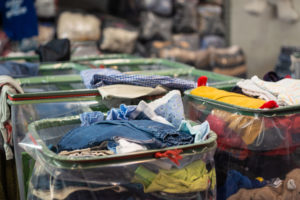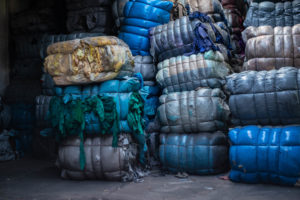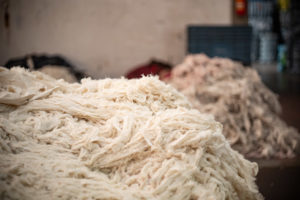Fashion is one of the most polluting industries in the world, everything we buy has a devastating impact on the environment. But the textile district of Prato has built its fortune by transforming old textile scraps into new soft fabrics in regenerated fibers.
Regenerated wool, for example, also called mechanical, is obtained from the complete recycling of post consumer garments or processing waste, composed of different percentages of wool.
Do you want to know how exactly it works? Here are the phases of the regenerated cycle, implemented by our processes:
-
- Collection of production scraps and post consumer garments;
- Selection: the garments are divided into classes of similar characteristics (composition, color, raw materials, etc.). The person in charge of making the selection is called “cenciaiolo”.
- Fraying: technique that consists in reducing the fabric into strips, so you can get from the rags a fiber that can be used again in tessiture.
- Carding: this process consists in beating the textile fibers to free them from impurities, untangle them and make them parallel, in order to allow the subsequent wool spinning operations.
- Filature: technique that twists the fibers by transforming the carded mass into a more or less thin cord, that is the yarn.




Upcycled fabrics represent a great resource for our planet and they allow to obtain many advantages in the environmental field: for example, the production of upcycled wool reduces water consumption by 90%, but not only that, the production savings also concern the consuption of CO2, energy, chemicals and dyes.
Furthermore, an upcycled fabric, in addition to transmitting the values of sustainability, also means high quality, because even after the process it maintains the same characteristics of the original product.


